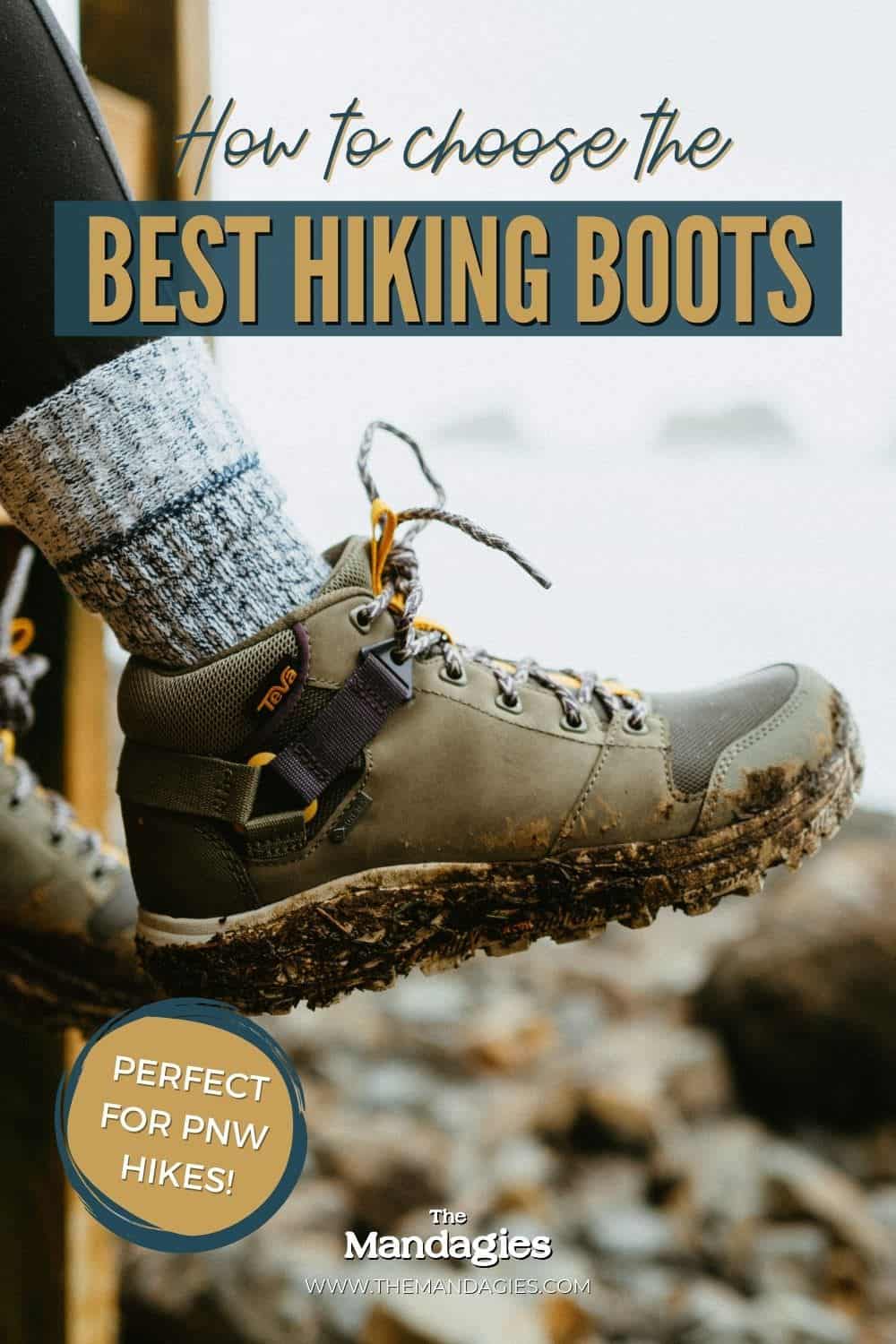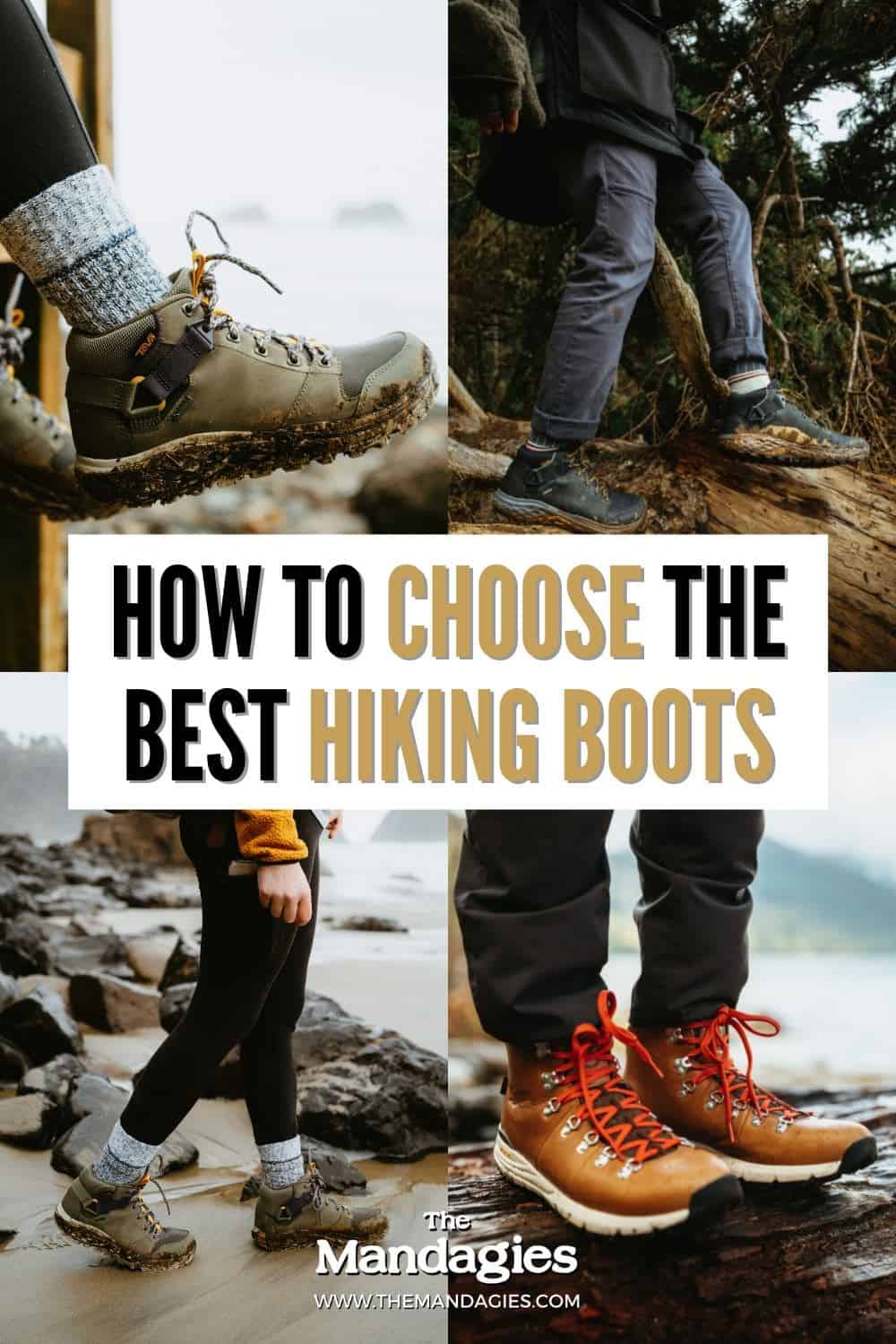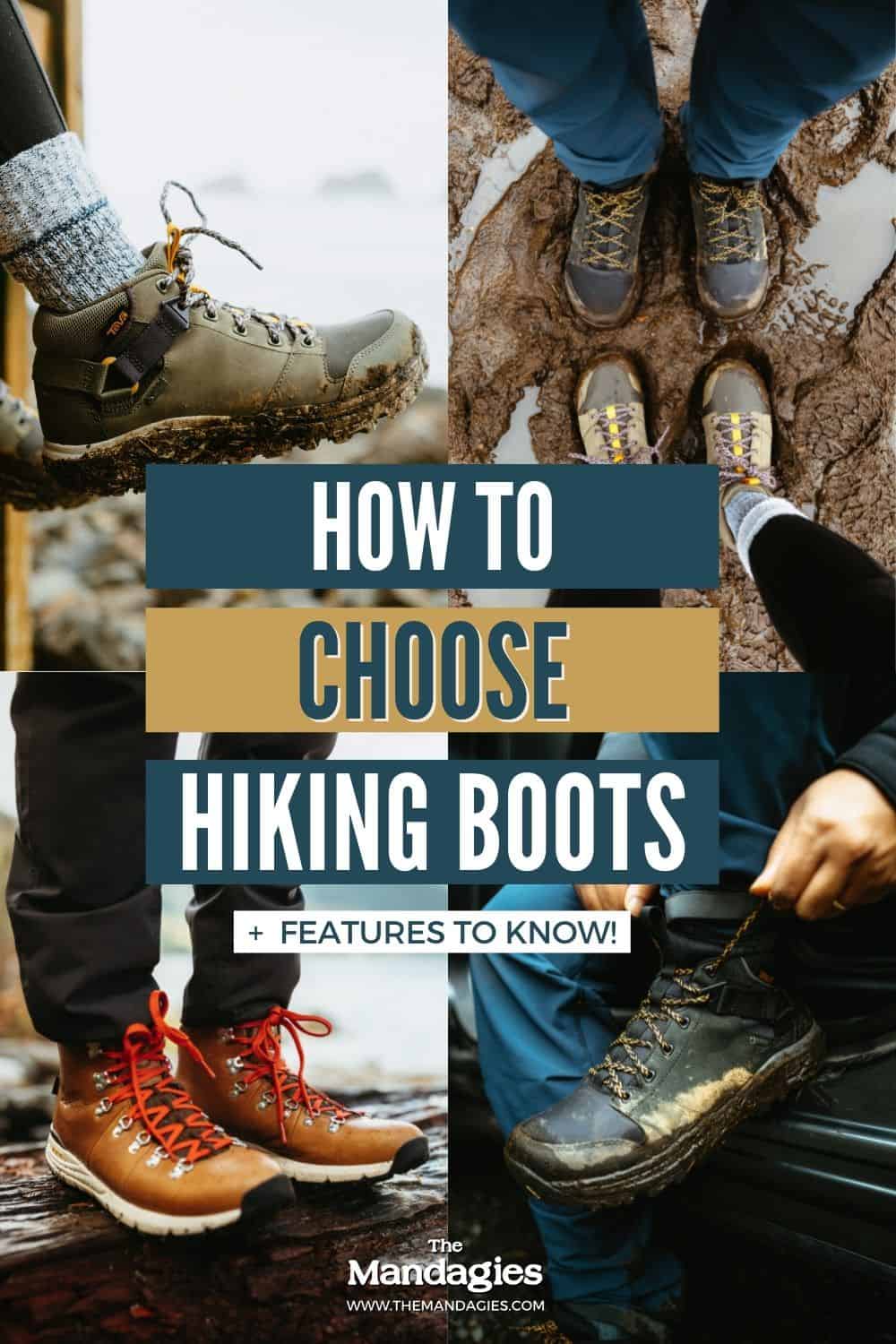Post Summary: How To Choose Hiking Boots For Your Best Fit Yet
Have you been recommended a pair of hiking boots by a friend, only to have them be super uncomfortable on your own feet? It’s not your friend’s fault – the truth is, hiking shoes are a personal, highly-specified item!
In this post, we’re breaking down how to choose hiking boots that are right for you. We’re covering topics like waterproofing, weight, traction, ankle support, and more to help you find your perfect pair of hiking shoes.

How To Choose Hiking Boots And The Features To Consider
Before We Begin…
Picking the best hiking boots is just the start of your journey! Here are some other blog posts to read to prepare yourself for an amazing time on Pacific northwest hiking trails:
- How To Break In Your New Hiking Boots
- The 12 Best Hiking Boots (According to our PNW readers)

Need Help? Go get fitted in person!
Sometimes, the best way to ensure a good fit is to try before you buy.
Outdoor retailers like REI or a shoe store can be a great way to buy hiking boots if you prefer to try them on in person.
You can also talk with an associate about the features that are important to you. They might be able to suggest another shoe brand that could be a better fit, and show you how to pick hiking boots that are right for you.
Another great reason to go try them on in the store – some stores have obstacle courses to test out with your new shoes. See how they feel on uneven terrains and inclines!
Read More: How To Register at REI For Wedding Gifts For Outdoorsy Couples

Hiking Shoes vs Hiking Boots
The subject matter here is weight. The shoes you choose depend on the activities you will be doing.
Generally, the heavier the boot, the sturdier it is. However, heavy boots bring on fatigue much faster than lightweight hiking boots, so they are best chosen for shorter, harder trips.
Trail runners might be the best pick if you are planning a thru-hike (like the PCT, ACT, or the CT). These long-distance trails will have you easily closing in on 300-1,000+ miles, and you’ll want hiking shoes that are supportive but lightweight for long walking days. Just remember trail runners aren’t as sturdy as other shoes, and you might have to replace them every 500-600 miles.
Lightweight hiking boots are a little more versatile – they can be taken on longer day trails, or even short backpacking trips.
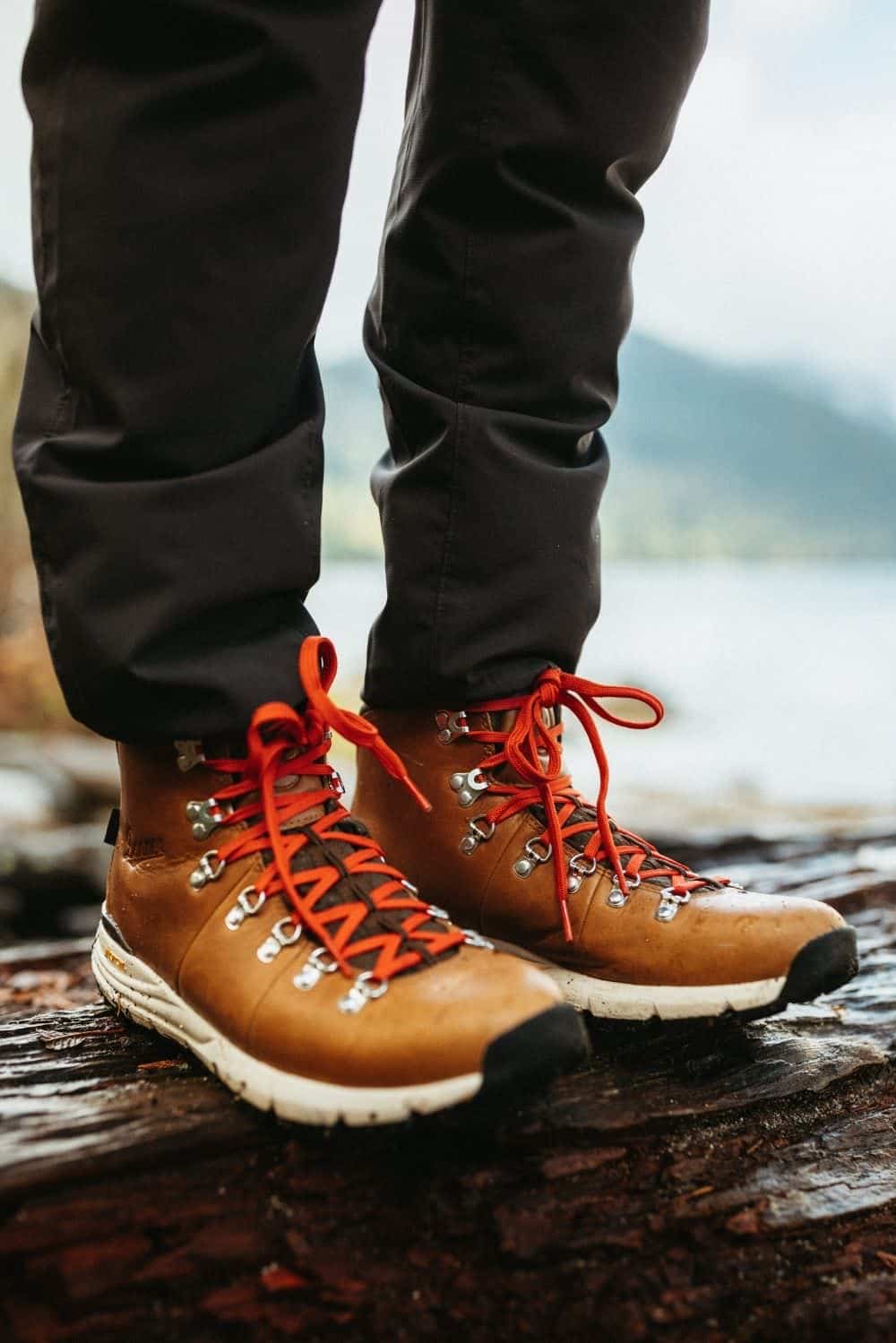
Arch Support and Ankle Support
Other features to consider when choosing hiking boots are arch support and ankle support. These considerations will help reduce pain and keep you safe.
Are you planning to use your hiking boots on rough, uneven terrain? You might want to consider ankle support. Look for boots that say “mid” which means that they come higher up on the ankle. You can also look for shoes with more rigid soles. You can test the rigidity of soles by twisting them in your hand. The sturdier the sole, the more stability you may experience.
Looking for arch support? The best way we’ve found to determine the best hiking boots with arch support is by reading reviews! You can also purchase separate insoles, and put them in your favorite boots to better suit your arch needs.


Waterproof (Gore-Tex) vs Breathability
Living in the Pacific Northwest, waterproof hiking boots feel like the norm. However, there are a lot of reasons to go the breathable route too!
Before choosing, determine when and where you will be hiking. This way, you choose boots based on your favorite trails to explore instead of buying necessary features of adding unnecessary weight.
If you love wet hikes like Washington hiking trails or Oregon coast hikes, consider buying waterproof hiking boots. More often than not, you’ll want to choose a hiking boot for Pacific Northwest trails that have a waterproof lining, most often recognized by the title Gore-Tex.
If you love desert terrain or warm weather hikes, consider breathable shoes, which can easily be dried out by keeping them in the sun.
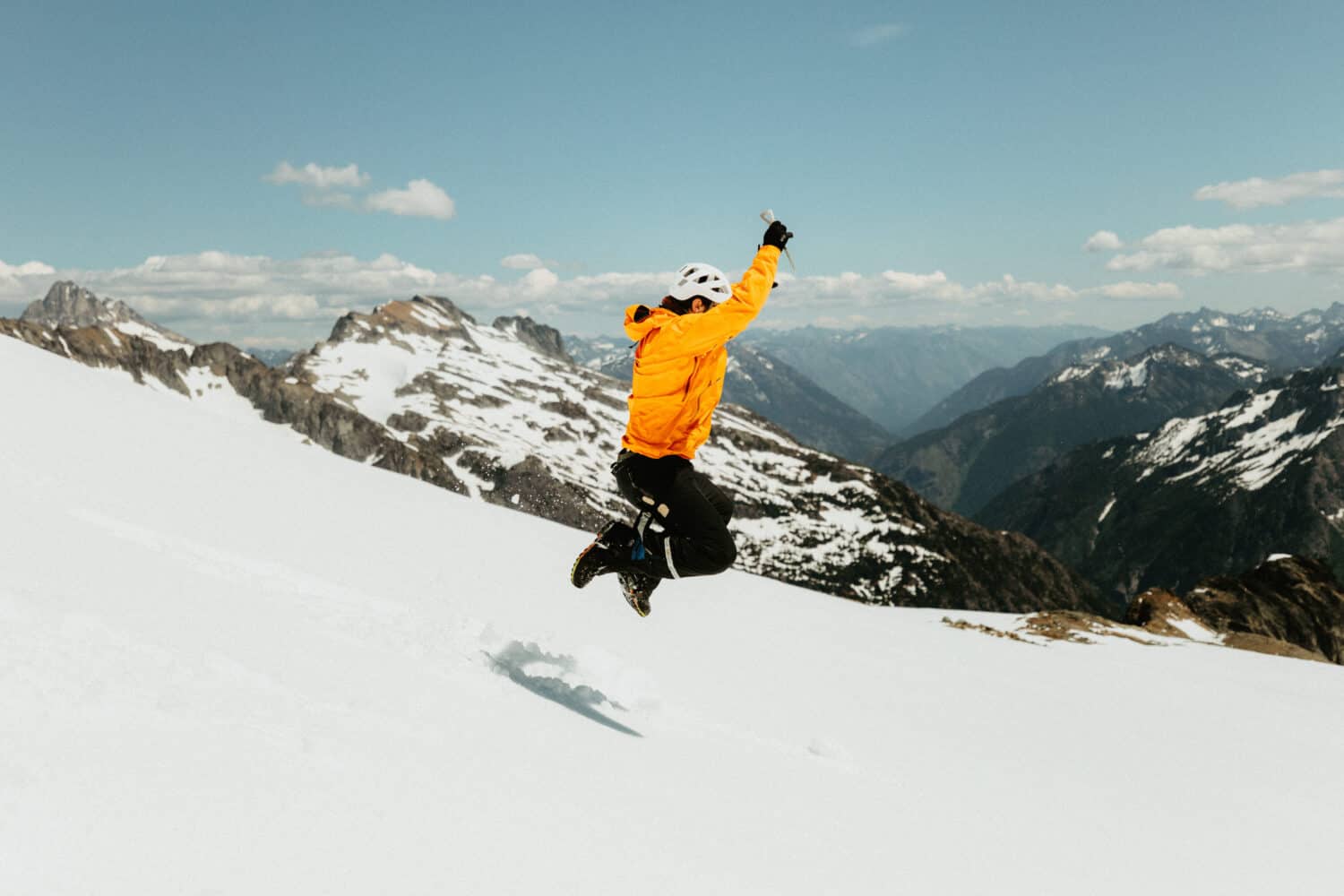
Traction
Finally, consider traction when discovering how to choose hiking boots! No single hiking shoe will provide you with the best traction, because that depends on what terrain you want to explore.
An easy trick to use is to match your soles to the terrain.
Slick rock? Choose soft rubber outsoles to maximize surface area. Rough, steep terrain? Choose boots with deep ridges, angular cuts, and heel brakes. This also applies to muddy trails and snowy trails too!
When figuring out how to choose hiking boots? Which features are most important to you? Share with us in the comments below!
MORE HIKING POSTS
The 15 Best Day Trips From Portland, Oregon
How To Plan A Trip To The Pacific Northwest
15 Convenient Hikes Near Seattle
Hike To Falls Creek Falls Trail in Washington State
The 19 Best Washington Winter Hikes
11 Easy Hikes In Glacier National Park
15 Incredible Hiking Trails in Sedona, Arizona
